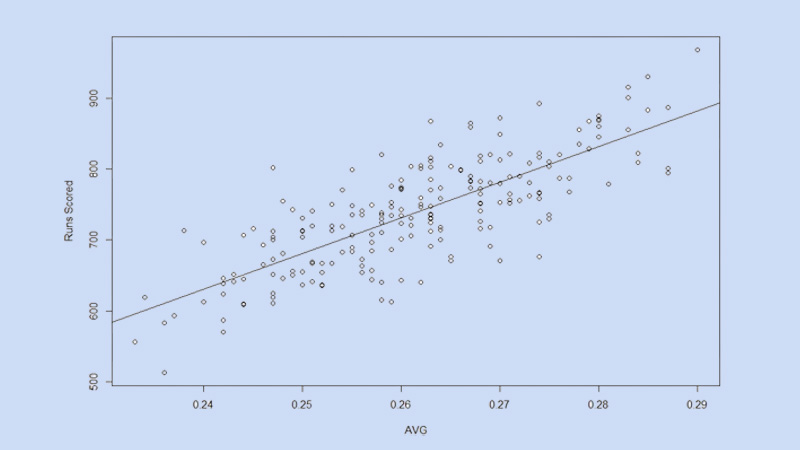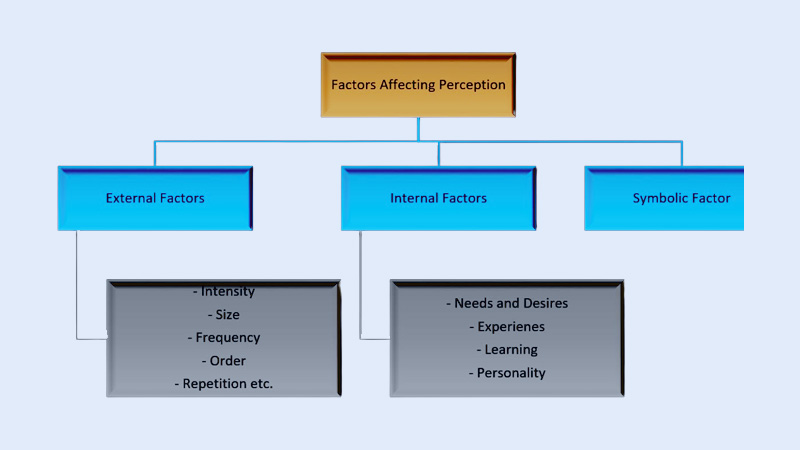In the world of baseball, evaluating a player’s offensive performance is a fundamental aspect of the game. Traditionally, batting average (BA) has been the go-to metric for assessing a player’s hitting ability.
However, in recent years, on-base percentage (OBP) has emerged as a more comprehensive and reliable measure of offensive success. OBP takes into account not only hits but also walks, hit-by-pitches, and other ways of reaching base.
This expanded perspective offers a more accurate representation of a player’s ability to contribute offensively and generate runs. Understanding the significance of OBP and its advantages over BA is essential for assessing a player’s overall offensive value.
This article delves into the reasons why on-base percentage beats the batting average and highlights the factors that make OBP a crucial metric in modern baseball analysis.
What Is the On-base Percentage in Baseball?
In baseball, the On-base Percentage (OBP) is a statistic that measures a player’s ability to get on base safely. It quantifies the frequency at which a batter reaches base by any means, including hits, walks, and hit by pitches, relative to their total plate appearances.
The formula to calculate OBP is:
OBP = (Hits + Walks + Hit by Pitches) / (At Bats + Walks + Hit by Pitches + Sacrifice Flies)
Key components of the formula include:
Hits: The number of times a batter safely reaches base with a hit.
Walks: The number of times a batter is awarded a base after receiving four balls from the pitcher.
Hit by Pitches: The number of times a batter is struck by a pitched ball and awarded first base.
At Bats: The number of official plate appearances in which the batter has a chance to record a hit, excluding walks, sacrifices, and hit-by-pitches.
Sacrifice Flies: The number of times a batter hits a fly ball that allows a runner to score after the catch. Sacrifice flies are not counted as at-bats, so they are subtracted from the denominator to account for this.
The resulting value of OBP is expressed as a decimal or a percentage. For example, an OBP of .350 means the player reaches base successfully 35% of the time.
On-base Percentage is a valuable statistic because it provides a more comprehensive view of a batter’s ability to contribute offensively by considering not only hits but also the ability to draw walks or get hit by pitches, both of which contribute to the team’s scoring opportunities.
Significance of Obp Compared to Batting Average

The On-base Percentage (OBP) and Batting Average (BA) are both important statistics in baseball, but they provide different insights into a player’s offensive performance.
Batting Average is a simple calculation that measures a player’s success in getting base hits relative to their total at-bats.
It is calculated by dividing the number of hits by the number of at-bats. Batting Average provides a quick snapshot of a player’s ability to make contact with the ball and get base hits.
On the other hand, On-base Percentage takes into account not only hits but also walks and hit-by-pitches, providing a broader measure of a player’s ability to reach base safely. OBP includes all instances in which a batter successfully reaches base, whether it’s through hits, walks, or hit by pitches.
It reflects a player’s overall offensive contribution by considering their ability to generate scoring opportunities and avoid making outs.
The significance of OBP compared to the Batting Average lies in its ability to provide a more comprehensive view of a player’s offensive effectiveness. OBP acknowledges the value of other offensive skills beyond simply getting hits.
Players who draw walks or get hit by pitches frequently contribute to their team’s offense by extending innings, advancing baserunners, and creating scoring opportunities.
While Batting Average is often more readily recognized by fans and historically has been given more emphasis, OBP is increasingly recognized as a more accurate measure of a player’s offensive value. It better reflects a player’s ability to generate runs and contribute to the team’s overall success.
What to Consider While Evaluating a Good On-base Percentage?
To evaluate what constitutes a good on-base percentage (OBP), it is important to consider the historical context and changes in offensive environments throughout baseball history.
Over time, factors such as changes in rules, equipment, and playing styles have influenced the offensive landscape. Historical benchmarks for a good OBP may differ from the present day due to these contextual variations.
League Average Obp and Its Implications
Examining the league average OBP provides valuable context for evaluating individual player performance. The league average OBP serves as a reference point to assess how a player compares to their peers.
It provides insight into the overall offensive environment and can indicate whether a player’s OBP is above or below the norm. Comparing a player’s OBP to the league average helps determine their relative effectiveness in getting on base.
The benchmark for a Good Obp: .350 or Higher
While there is no definitive threshold for what constitutes a good OBP, a generally accepted benchmark is .350 or higher. This means that a player reaches base safely in at least 35% of their plate appearances.
A .350 OBP indicates consistent success in getting on base and reflects a player’s ability to contribute to generating runs for their team.
Factors Influencing a Player’s Obp
A player’s OBP is influenced by various factors, including plate discipline, batting approach, and situational awareness. Plate discipline refers to a player’s ability to discern between pitches in the strike zone and those outside of it, leading to a higher likelihood of drawing walks.
A patient hitter who can work counts and avoid swinging at pitches out of the strike zone is more likely to have a higher OBP.
The batting approach also plays a role in a player’s OBP. Some hitters prioritize making contact and putting the ball in play, while others focus on working deep counts and drawing walks.
Each approach can result in different OBP outcomes, depending on the player’s skill set and style of play.
Role of On-base Percentage in Team Success
On-Base Percentage (OBP) plays a crucial role in a team’s offensive success as it directly correlates with generating runs. The more often a team’s players reach base safely, the more opportunities they have to advance around the bases and ultimately score runs.
A higher OBP increases the likelihood of multiple players being on base simultaneously, creating scoring opportunities and putting pressure on the opposing team’s defense.
Obp’s Impact on Team Strategies
A team’s OBP can influence its strategic approach to the game. A higher OBP allows for greater flexibility in implementing various offensive strategies such as stolen bases and hit-and-runs.
When players have a high OBP, they are more likely to be on base when these strategies are employed, increasing the chances of success and putting additional pressure on the defense.
For example, if a team has players with a high OBP at the top of their lineup, it becomes advantageous to utilize stolen base attempts to advance runners into scoring positions.
Additionally, the hit-and-run strategy, where the baserunner starts running during the pitch to create gaps in the defense, becomes more effective when there are players with a high OBP who can make contact and put the ball in play.
Factors Affecting Perception of a Good Obp

Usually, two specific factors affect the perception of good OBP. They are shortly discussed below.
Evolution of Baseball Thinking and Appreciation for Plate Discipline
The evolution of baseball thinking has greatly influenced the perception of a good on-base percentage (OBP). In the past, the emphasis was primarily on batting average as the measure of a hitter’s success.
However, as the understanding of the game evolved, there has been a greater appreciation for the importance of plate discipline and the ability to draw walks.
Today, there is a recognition that a player’s OBP is a more reliable indicator of their offensive value.
Plate discipline, the ability to lay off pitches outside the strike zone, and the willingness to take walks are seen as important skills that contribute to a hitter’s overall effectiveness. As a result, a higher OBP is now considered a more valuable attribute than simply a high batting average.
Player Roles and Expectations (Leadoff Hitters, Power Hitters, Etc.)
The perception of a good on-base percentage can vary based on the specific role and expectations of a player. Different positions in the lineup have different responsibilities and goals.
For example, leadoff hitters are typically expected to have a high OBP to set the table for the rest of the lineup. They are often selected for their ability to work counts, draw walks, and get on base consistently.
On the other hand, power hitters may be given more leeway in their OBP if they provide significant contributions in terms of home runs and extra-base hits.
While a high OBP is still desirable for power hitters, their primary focus may be on driving in runs and hitting for power rather than solely getting on base.
The perception of a good OBP can also depend on a player’s individual skill set and playing style. Some players may excel in other areas of the game, such as speed or defensive prowess, which can compensate for a slightly lower OBP.
The expectations for a player’s OBP can be influenced by their overall contributions to the team beyond just reaching base.
Why on Base Percentage Beats Batting Average?
On-base percentage (OBP) has gained prominence in evaluating a player’s offensive performance because it provides a more comprehensive and accurate assessment compared to the batting average. Here are several reasons why OBP beats batting average:
Takes Into Account All Ways of Reaching Base
The batting average only considers hits, excluding walks, hit-by-pitches, and other methods of getting on base.
OBP, on the other hand, encompasses all these outcomes, recognizing the value of a player’s ability to draw walks and get on base through other means. It provides a more complete picture of a player’s offensive contribution.
Reflects Plate Discipline and Patience
OBP rewards hitters who exhibit good plate discipline by laying off pitches outside the strike zone and taking walks.
A high OBP indicates that a player is selective, understands the strike zone, and has the ability to work counts. Plate discipline is a valuable skill that allows hitters to get on base even if they don’t make contact with the ball.
Measures Ability to Create Scoring Opportunities
Getting on base is essential for generating runs. OBP directly correlates with a player’s ability to create scoring opportunities by reaching base and becoming a potential runner.
It reflects a player’s impact on the game beyond just getting hits, as those who consistently get on base put pressure on the opposing team’s defense and contribute to run production.
Evaluates a Player’s Overall Offensive Value
Batting average solely focuses on hits, disregarding walks and other methods of reaching base. OBP considers all aspects of a player’s offensive game, providing a more accurate representation of their overall value.
It recognizes that getting on base is not solely dependent on making contact but also involves other skills like pitch recognition, patience, and understanding the strike zone.
Reflects the Changing Dynamics of the Game
The evolution of baseball strategy and analytics has led to a greater emphasis on OBP. As teams recognize the importance of base runners and run-scoring opportunities, OBP has become a crucial metric in player evaluation.
It aligns with the modern understanding of offensive success and the emphasis on data-driven decision-making.
On-base percentage surpasses batting average in evaluating a player’s offensive performance due to its comprehensive nature, including walks, recognition of plate discipline, measurement of creating scoring opportunities, assessment of overall offensive value, and alignment with the evolving understanding of the game.
OBP provides a more accurate and holistic view of a player’s ability to contribute offensively and generate runs.
FAQs
Why is OBP considered a better metric than the batting average?
OBP is considered superior because it includes all ways of reaching base, such as walks and hit-by-pitches, providing a more comprehensive assessment of a player’s offensive contribution. Batting average only accounts for hits, ignoring these valuable aspects.
How does OBP reflect a player’s plate discipline?
OBP rewards hitters with good plate discipline by including walks in the calculation. A high OBP indicates that a player has the ability to lay off pitches outside the strike zone and selectively draw walks, showcasing their patience and understanding of the strike zone.
Does OBP directly correlate with a player’s ability to generate runs?
Yes, OBP directly correlates with a player’s ability to create scoring opportunities. The more a player reaches base, the more opportunities there are for them to score runs or for teammates to drive them in.
Can a player have a high OBP but a low batting average?
Yes, it is possible for a player to have a high OBP despite a low batting average. This can occur if the player draws a significant number of walks, gets hit by pitches, or has a knack for reaching base through other means, compensating for a lower hit rate.
Is batting average still relevant in evaluating a player’s offensive performance?
Batting average is still relevant but has become less prominent in modern player evaluation due to its limitations. It provides a snapshot of a player’s ability to make contact and get hits, but it does not consider other aspects of reaching base or a player’s overall offensive value.
Conclusion
On-base percentage (OBP) surpasses batting average (BA) as a more comprehensive and accurate metric for evaluating a player’s offensive performance.
OBP considers all ways of reaching base, including walks and hit-by-pitches, providing a holistic assessment of a player’s ability to contribute offensively. It reflects a player’s plate discipline, patience, and ability to create scoring opportunities.
In contrast, BA focuses solely on hits and does not account for these crucial aspects. The evolution of baseball thinking, the recognition of the importance of plate discipline, and the emphasis on data-driven decision-making have contributed to the growing prominence of OBP.
While BA still holds some relevance, OBP provides a more nuanced and comprehensive understanding of a player’s offensive value. As the game continues to evolve, OBP will remain a vital tool in evaluating a player’s overall offensive prowess.







